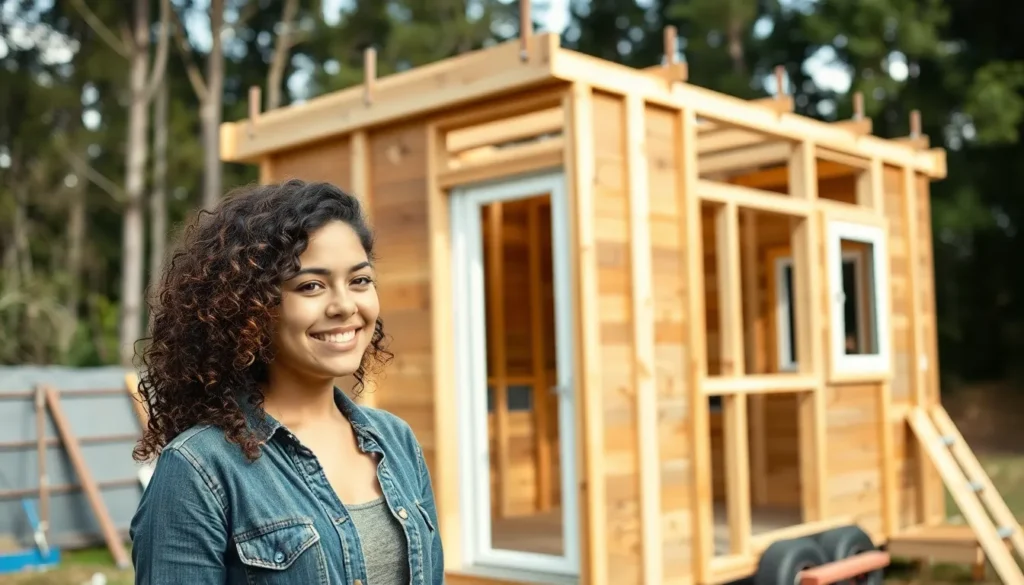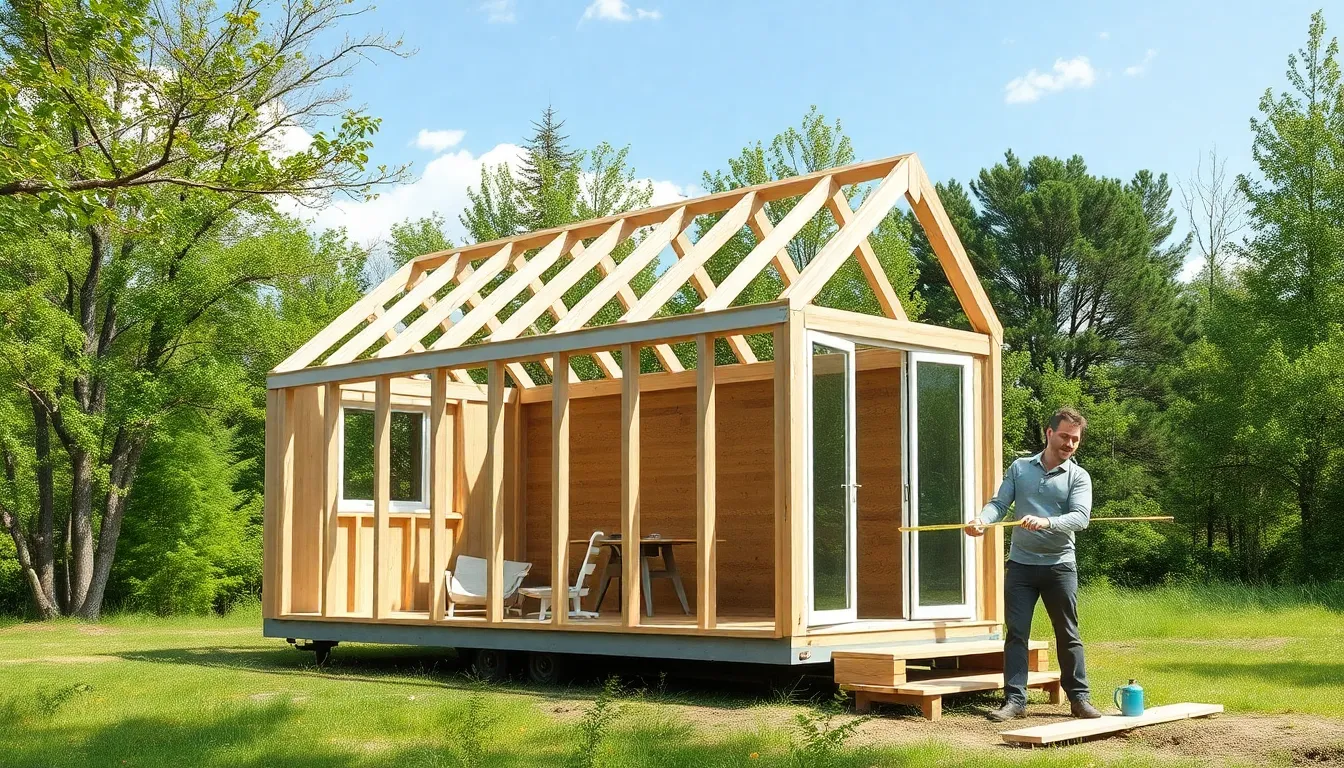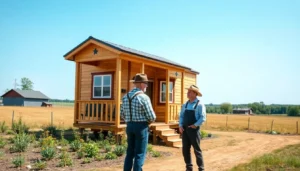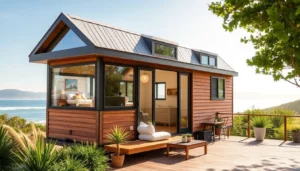Table of Contents
ToggleImagine living in a cozy space that’s as cute as a button and costs less than your daily coffee habit. Tiny home shells are the latest trend that’s capturing hearts and wallets alike. These minimalist marvels offer a blank canvas for those looking to downsize, simplify, or just escape the chaos of traditional living.
Overview Of Tiny Home Shells
Tiny home shells provide a framework for individuals seeking an efficient and functional living space. These structures serve as the exterior shell of a tiny house, often built using materials such as wood, metal, or composites. With numerous designs available, buyers can select styles that align with their personal tastes.
Customization options exist for tiny home shells. Homeowners can modify layouts, add windows, and choose roofing styles that enhance aesthetics and functionality. Choices in insulation and siding materials also play a role in energy efficiency and durability.
Affordability appeals to many when choosing tiny home shells. The price range typically varies from $10,000 to $50,000, depending on size and material used. Many owners avoid high construction costs by opting for DIY assembly, benefiting from a sense of accomplishment.
The minimalist lifestyle aligns seamlessly with tiny home shells. Owners often embrace simplicity, focusing on essentials that bring joy and reduce clutter. This perspective promotes sustainable living by minimizing resource consumption and maximizing space utility.
Tiny home shells contribute to mobility and flexibility. Many structures are designed on trailers, allowing for easy relocation. This feature supports a nomadic lifestyle, enabling individuals to explore while minimizing housing costs.
Environmental consciousness increases with the popularity of tiny home shells. A reduced footprint results from smaller living spaces, which may lower the demand for land and resources. These shells often encourage sustainable practices through their minimalist designs and material options.
Investors and builders find value in the growing market of tiny home shells. As more individuals gravitate towards smaller living spaces, the potential for business expansion rises. It’s evident that tiny home shells reflect a shift towards innovative and sustainable housing solutions.
Benefits Of Tiny Home Shells
Tiny home shells offer various advantages that make them appealing to many individuals. They combine affordability with functionality, promoting a unique living experience.
Cost Efficiency
Cost efficiency ranks high among the benefits of tiny home shells. Prices range from $10,000 to $50,000, making them accessible for many budgets. Many buyers choose to assemble these shells themselves, significantly cutting construction costs. Less financial burden allows homeowners to allocate funds to customization or mobility aspects. This financial flexibility often leads to reduced monthly expenses, allowing for a simpler lifestyle.
Eco-Friendly Living
Eco-friendly living is another important aspect of tiny home shells. These structures typically feature reduced square footage, minimizing material usage. Lower energy consumption results from smaller spaces, promoting sustainability. Many tiny homes incorporate energy-efficient appliances and renewable energy sources. Additionally, smaller footprints encourage homeowners to adopt a minimalist lifestyle, leading to less waste and promoting environmentally conscious practices. The focus on responsible living aligns with the broader movement towards sustainable housing solutions.
Types Of Tiny Home Shells
Tiny home shells vary widely, offering choices for different needs and preferences. Some structures serve as a blank canvas for owners looking to personalize their living spaces.
Prefabricated Shells
Prefabricated shells streamline the building process. These options typically consist of pre-cut materials assembled off-site, ensuring quality and efficiency. Various designs are available, meeting diverse aesthetics. Builders can select from technical specifications and established styles, simplifying construction. Costs often remain lower than custom builds, appealing to budget-conscious buyers. Many prefabricated shells also come with energy-efficient insulation, reducing long-term utility expenses. As a result, they provide sustainable living solutions without extensive initial investment.
Customized Options
Customized options cater specifically to individual preferences and lifestyles. Homeowners can choose layouts, materials, and features to create unique designs. Adjustable elements, such as window placements and roofing styles, allow for personal flair and practical functionality. These shells accommodate specific needs, whether for mobility or a more permanent setting. Customization enhances both the interior and exterior, ensuring the home reflects its owner’s style. Prices for these options typically range from $10,000 to $50,000, depending on specifications and complexity. Accordingly, customization offers flexibility, empowering owners to design their ideal tiny living space.
Factors To Consider When Choosing A Tiny Home Shell
Selecting a tiny home shell involves several key factors that impact overall satisfaction. Understanding these factors ensures a well-informed decision.
Size and Layout
Space availability plays a crucial role in choosing a tiny home shell. Tiny homes typically range from 100 to 400 square feet, making efficient layout design critical. Families often seek multi-functional spaces to accommodate various activities. Considering height is essential; lofted areas can provide extra sleeping space or storage. Adapting designs to personal preferences creates a unique living environment. Owners frequently assess their lifestyle needs and plan layouts that enhance daily routines. Prioritizing ample natural light and ventilation in the design contributes significantly to comfort.
Materials Used
Material selection influences durability and aesthetics. Popular choices include wood, metal, and composite materials, with each offering distinct benefits. Wood provides a classic look with excellent insulation properties. Metal, on the other hand, offers strength and longevity, ideal for mobile structures. Composite materials often combine the best features of both, providing weather resistance and low maintenance. Homeowners typically consider energy efficiency when selecting materials, which can lead to significant cost savings. Sustainable options, such as reclaimed wood and environmentally friendly composites, align with the growing trend toward eco-conscious living.
Conclusion
Tiny home shells represent a transformative approach to living that resonates with those seeking simplicity and sustainability. Their affordability and customizable nature make them appealing to a wide range of individuals. By prioritizing efficiency and functionality, these structures allow homeowners to create personalized spaces that reflect their lifestyles.
The mobility offered by many tiny home shells adds to their allure, enabling a flexible lifestyle that aligns with modern values. As the demand for such innovative housing solutions continues to grow, tiny home shells are poised to play a significant role in shaping the future of sustainable living. Embracing this trend not only fosters a minimalist lifestyle but also contributes to a more eco-conscious world.








